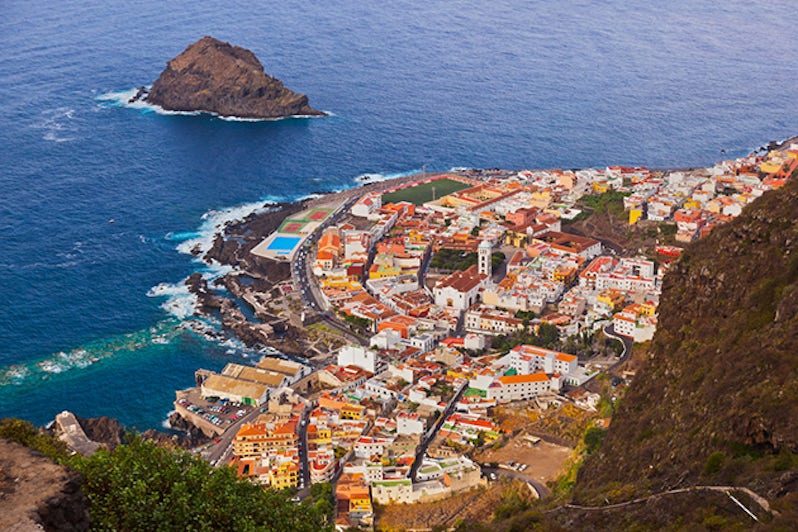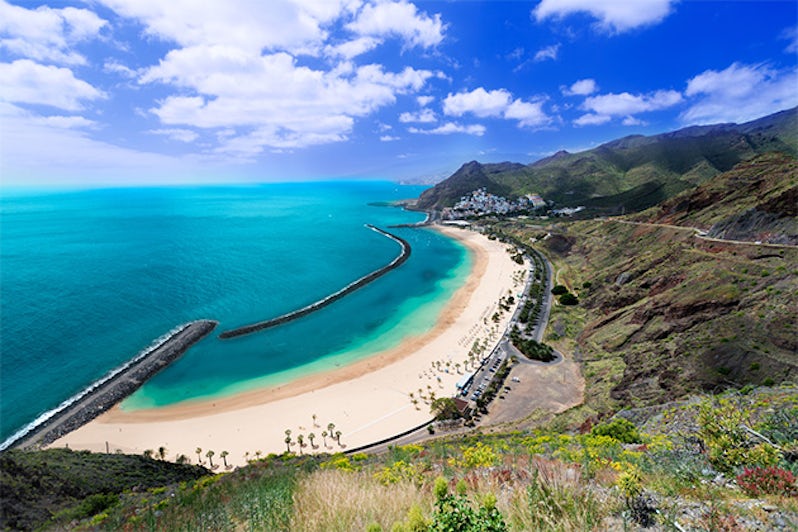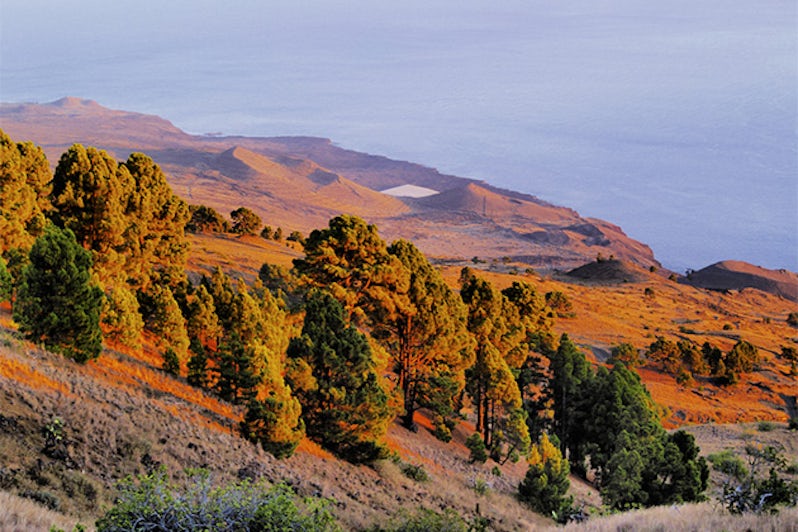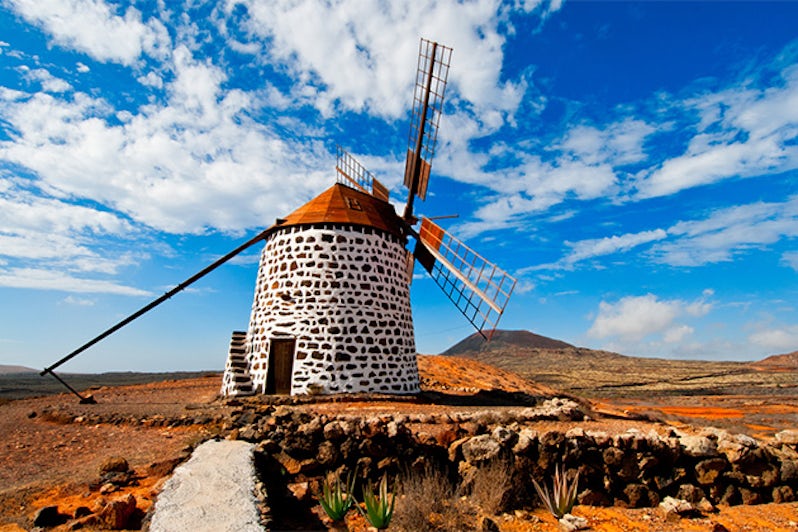Canary Islands Cruise Tips


Most visitors to the Canary Islands, the archipelago in the Atlantic Ocean southwest of Spain, are lured by the 600 miles of coastline and more than 500 beaches, yet there's so much more. Beyond the loud holiday resorts and buzzing nightlife lie wild forests, volcanic craters, bizarre lunar landscapes and ancient towns. These exotic islands certainly have the capacity to surprise.
The archipelago is made up of seven islands: Gran Canaria, Tenerife, Lanzarote, Fuerteventura, La Palma, La Gomera and El Hierro. Cruise ships stop at all of them, although not necessarily all in one visit; it's common for a ship to visit one or two as part of a longer sailing. Of the ports, Gran Canaria, La Palma and La Gomera are the ones most frequently included on itineraries.
The Canary Islands are extremely popular with Brits, especially in winter because they're some of the closest locations guaranteed to have warm, sunny weather. Most cruises leave out of Southampton. The Canaries are also popular stops on spring and fall repositioning cruises, which tend to draw a more international passenger base. Because the islands are governed by Spain, Spanish is the official language; cruisers will find most locals speak English, however.

Best Time for Canary Islands Cruises
Cruise ships call on the Canary Islands year-round, as warm, sunny weather is guaranteed whatever time of year you decide to sail. July to September are the hottest months, with average temperatures in the high 80s. Remember the sunscreen! Though winter is not quite as warm, January and February are good times to visit, as the islands are at their lushest after the rains. December to March is a busy season for the Canaries, with visitors coming to lap up some sunshine. If you're in Tenerife in February, The Carnival of Santa Cruz de Tenerife is a pretty spectacular event, which attracts thousands of people from around the world, and cruisers are encouraged to take part.
Canary Islands Cruise Lines
Several cruise lines -- including Saga, Marella, P&O, Fred Olsen, Cunard and MSC -- offer Canary Islands itineraries. Ships leaving the U.K. tend to call on ports in Spain, Portugal or Madeira en route.
On the luxury end, tall ship Sea Cloud offers a Canary Island-only itinerary departing roundtrip from Las Palmas (Gran Canaria) and sailing to Santa Cruz (La Palma), San Sebastian (La Gomera) and Puerto de la Estaca on El Hierro. Silversea offers cruises from Malaga to Ghana, making calls at Arrecife and Las Palmas enroute, while the voyage from Santiago Island to Lisbon calls on Las Palmas and San Sebastian. Azamara offers roundtrip sailings from Barcelona, calling on La Palma, La Gomera, Tenerife and Lanzarote. Star Clippers departs Malaga, calling at Tangier, Arrecife and Las Palmas.

Canary Islands Cruise Itineraries
Canary Island Only Cruises: Marella offers seven-night Canary Island-intensive cruises departing from Santa Cruz de Tenerife and calling on Las Palmas (Gran Canaria) San Sebastian (La Gomera), Arrecife (Lanzarote), Puerto del Rosario (Fuerteventura) and Santa Cruz (Tenerife).
Western Europe Cruises: In general, cruises down the Atlantic coast and back are normally 10 nights or longer. For example, Saga offers 13- and 14-night cruises departing from Southampton, calling on Santa Cruz de la Palma, Santa Cruz de Tenerife, San Sebastian (La Gomera) and Arrecife (Lanzarote). Keep in mind that these sailings often traverse the Bay of Biscay, off the west coast of France, which can have notoriously rough seas.
Western Mediterranean Cruises: The Canaries often appear on Western Mediterranean cruise itineraries, too. These generally depart from Genoa, Civitavecchia (Rome) or Barcelona. There is the option with Crystal Cruises to embark at Lisbon and sail to Tenerife and Lanzarote, disembarking in Monte Carlo. MSC cruises call on Santa Cruz de la Palma, Santa Cruz deTenerife, Arrecife, San Sebastian de la Gomera and Puerto del Rosario. These depart from Genoa or Marseille, calling on ports in Spain and Madeira enroute. Hapag Lloyd sailings from Lisbon call on Arrecife, Santa Cruz de Tenerife, San Sebastian de la Gomera, Santa Cruz de la Palma and Las Palmas de Gran Canaria. Norwegian Cruise Line offers Atlantic islands cruises departing from Barcelona, calling on Arrecife and Lanzarote.
Europe/West Africa Cruises: Some 13- and 14-night cruises combine the Canary Islands with Cape Verde off the coast of West Africa, or include calls on Agadir or Casablanca in Morocco.
Transatlantic Cruises: Round-the-world and transatlantic voyages usually also visit one or two ports in the Canaries. Celebrity's repositioning cruises from Rome to Fort Lauderdale stop in the Canary Islands of Lanzarote, Gran Canaria and Tenerife, while Costa's repositioning cruise from Venice to Miami stops at Arrecife and Tenerife along the way.
Themed cruises focus on beaches, walking or nature. Fred. Olsen offers walking themed cruises with shore walking excursions in Santa Cruz de Tenerife, Las Palmas and Arrecife.

Canary Islands Cruise Port Highlights
Santa Cruz de La Palma (La Palma). This is a relaxed port, with shops, cafes and churches to wander through. The palm tree-lined Plaza de Espana, the center of town, is home to an artisans' market that sells lacework, embroidery and leatherwork and has a worth-seeing church, El Salvador. There is a Naval Museum nearby, which was built as a full-size replica of Columbus' ship, Santa Maria. The 17th-century Castillo de Santa Catarina fortress overlooking the waterfront is a national monument. Outside the city, the peaceful island with black-sand beaches is particularly attractive to hikers and is famed for its flora and fauna. The Parque Nacional de la Caldera de Taburiente, an 18-square-mile nature reserve, is a tapestry of pine forests, waterfalls and walking trails.
Santa Cruz de Tenerife (Tenerife). This is the main port on the island. Sights include the Museum of Man and Nature, which records the evolution of the Canary Islands to the present day, and there's a contemporary art gallery, Espacio de las Artes. The baroque church Iglesia de la Concepcion contains a wooden cross dating back to the time of the Spanish conquistadors. The town's name derives from this relic. Santa Cruz also has gorgeous botanic gardens bursting with endemic flowers and shrubs. Tenerife's main tourist attraction is Teide National Park in the island's center. This is where parts of Star Wars and Planet of the Apes were filmed. El Teide is Spain's highest mountain -- a perfect conical volcano at 12,198 feet high. If you're feeling energetic, climb to the top, or you can jump in a cable car to whisk you up there.
Las Palmas (Gran Canaria). Sometimes referred to as a continent in miniature, Gran Canaria has a dramatic variation of terrain, ranging from green and leafy in the north to mountainous and desert-like in the south. Las Palmas is the port city and energetic capital. It has a big-city feel and sun-drenched beaches. For beach fans, one of the best is urban beach Playa de las Canteras; its bustling promenade is full of stalls, cafes and souvenir shops. Explore the city's delightful old quarter and the district of Parque Santa Catalina, with quirky shops and sidewalk cafes. This is also where the Museo Canario is located. It has a valuable collection of local archaeological objects. The Casa de Colon Museum, a 15th-century military governor's residence, is said to be where Columbus stayed before he set sail for the New World. It also houses a museum about him.
Arrecife (Lanzarote). The most easterly island of the archipelago, it has a surreal beauty because of its volcanic terrain. Arrecife, the capital and port, has plenty of beaches for sun-worshippers to enjoy. See the inland saltwater lagoon, Charco de San Gines, where there's a fleet of fishing crafts. If culture is more your style, there is Arrecife's Museum of International Art, which you can see as you enter the port, and the ancient Castillo San Gabriel, which is home to Lanazarote's Ethnographic museum. That's where you can learn about the Guanche, the island's original aboriginal inhabitants. Across the island, the influence of architect and environmentalist Cesar Manrique is obvious, meaning Lanzarote was granted UNESCO Biosphere Reserve status. Atmospheric Teguise, Lanzarote's one-time capital, has a castle lording over everything, recalling an illustrious past. For a frisson of excitement, take a camel ride to the volcanic region, or if meandering around the shops is your favorite pastime, you'll love poring over exquisite embroidery, pottery and basket work.
San Sebastian (La Gomera). This tiny, unspoiled port in the Atlantic is also known as the Island of the Trade Winds. This is where to expect wildlife, rather than nightlife. Hilltop areas are carpeted in dense jungle and often mist shrouded, giving them a haunting allure. San Sebastian is the capital and main port. The oldest building there is the Torre del Conde, a medieval fortress and important example of military architecture. The Casa de la Aguada, sometimes known as the Casa de la Aduana, once served as the customs house. Now the tourist office is located in part of it, while a larger part is devoted to exhibitions and Columbus. Legend says that Columbus drew water from the well that sits in the middle. Garajonay National Park, a subtropical rainforest, is home to the rock formation of the same name and the highest point in the island. It has superb hiking trails and is one of Europe's last surviving dense and humid laurel forests. Around 450 floral species have been recorded there.

Puerto de la Estace (El Hierro). El Hierro is a wild island lost in a time warp. Pitted with volcanic craters, this -- the smallest of the Canary Islands -- is a mixture of arid prairies and fertile land awash with bananas, papayas, almonds, figs and avocados. El Hierro has been granted UNESCO Geopark status to preserve its natural and cultural diversity. Cruise ships dock in pint-sized Puerto de la Estaca, which is not far from the island's capital, the village of Valverde. Besides friendly locals, a highlight there is the abundance of nature all around. Shops and cafes in Valverde offer a taste of local life.
Puerto del Rosario (Fuerteventura). Fuerteventura is a UNESCO-listed Biosphere Reserve. The name means "strong winds," hence its popularity with windsurfers. Shifting sands change patterns daily due to the winds, and where there's wind and sand, there are, of course, dunes. Fuerteventura's proximity to the Sahara is the reason for its particularly sunny weather, and tourism is the biggest industry, with principal resorts in the south and north. Its port and small capital, Puerto del Rosario, is proud of its open-air gallery, boasting more than 100 life-size sculptures. These are randomly spread throughout the town. For shoppers, Las Rotundas Shopping Centre in the town center has three floors of shops and restaurants. They do not close for siesta like most other shops in town. Casa de la Cultura is where temporary exhibitions, plays and concerts are held every now and then.

Canary Islands Cruise Tips
Mind your hours. If you intend to do some shopping, keep in mind that traditional hours are Monday to Saturday, 9 a.m. to 1 p.m. and 4 p.m. to 8 p.m. Many of the large shopping centers are open all day.
Avoid tourist traps. Some of the island's large tourist resorts are pretty disheartening. Think Irish pubs and fast food chains. It's wiser to choose shore excursions that allow you to visit more traditional towns and villages, as well as the many attractions these islands have to offer. Or, if you prefer to choose your own itinerary, rent a car.
Be a beach bum. Gran Canaria has countless sandy beaches, ideal for relaxing. One of the best is urban beach Playa de las Canteras, its bustling promenade full of stalls, cafes and souvenir shops. Unless you're a fan of busy beaches, you won't like many of those on Tenerife, which are often packed. Most of Lanzarote's beaches have black sand, while Arrecife in Lanzarote has lots of lovely white-sand beaches for sun-worshippers to enjoy.
Drink it in. While in Lanzarote, sample some local wine. Grapes grow in volcanic ash there, resulting in many first-class wines.
Take a tip on tipping. If you use taxis on the islands, it's customary to tip 10 to 15 percent if the taxi is metered.